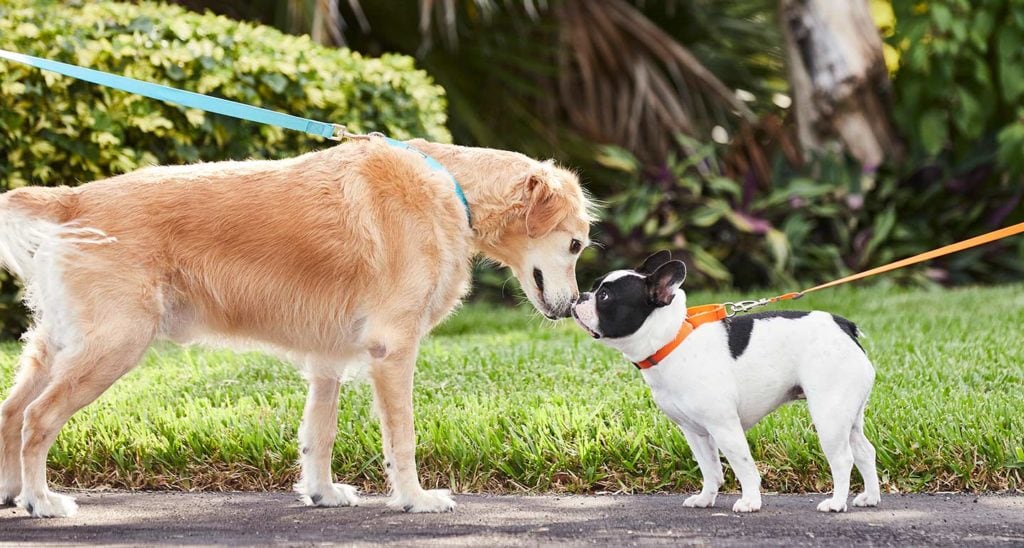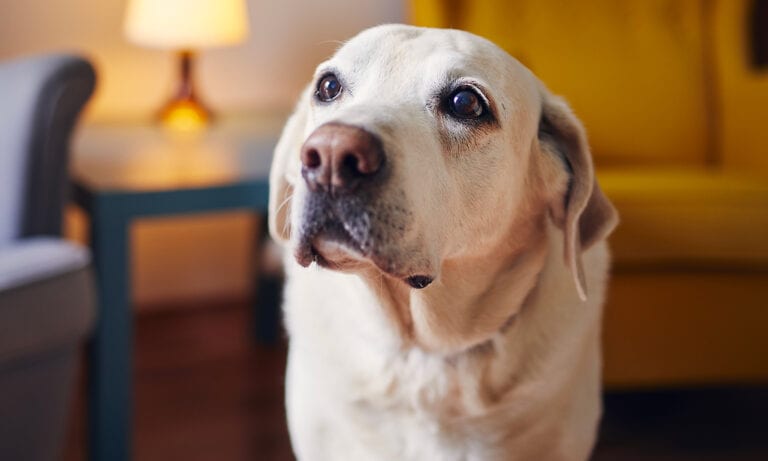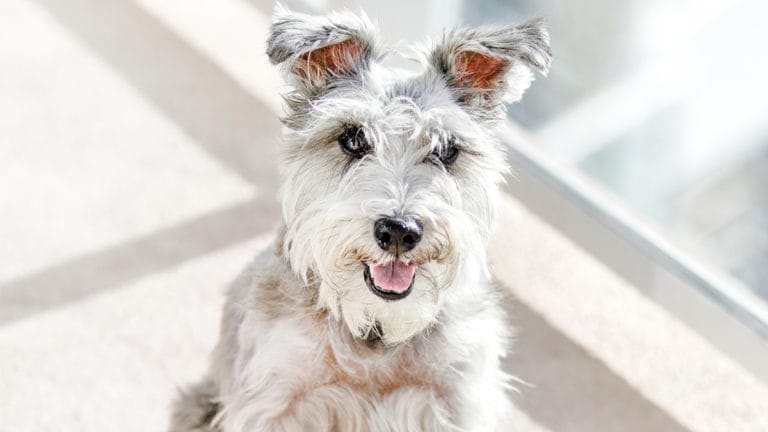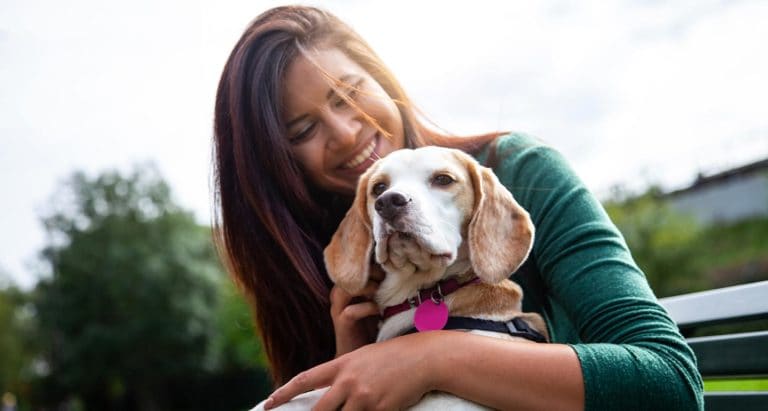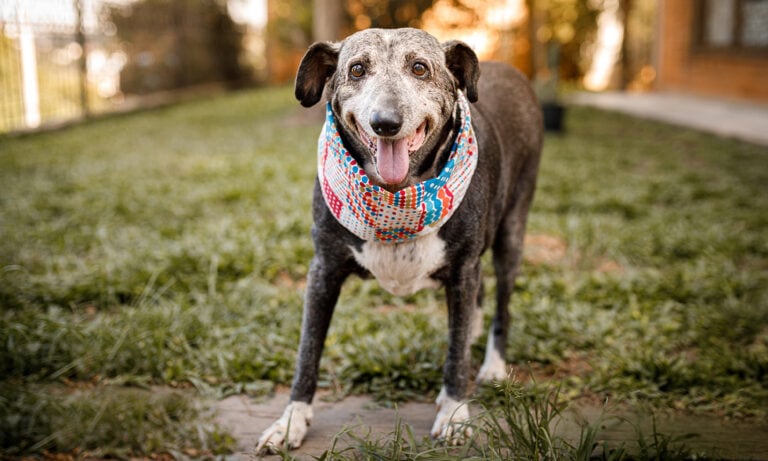I once adopted an adult rescue dog named Franklin. He had lived a very sheltered life where he rarely left his home and got no training. He showed symptoms of separation anxiety, barked and lunged on leash at other dogs, and attacked gardening equipment. Clearly, his former caretakers were unable to or simply didn’t know how to socialize an older dog.
I knew I needed to reduce Franklin’s stress to improve his behavior, so we embarked on a focused training and socialization program. About six months later, Franklin was fine when left alone, great with other dogs and calm around gardening equipment. The improvement was so dramatic that strangers regularly complimented me on how well-behaved Franklin was.
Is your dog like Franklin, well past puppyhood but a bit in need of dog socializing? Don’t panic; there’s hope! With the right training, you can socialize an older dog.
The Challenges of Socializing an Older Dog
Because of the way the brain develops, dog socializing gets harder as a dog gets older. During early puppyhood, dogs are open to new experiences. With proper early socialization, most puppies will grow up to be comfortable in a wide variety of situations. But if puppies don’t get good early socialization, or are predisposed to anxiety due to genetics or other factors, they can grow up to be fearful adults. Since the adult brain is less flexible, it takes more work to address adult dogs’ fears and anxieties. Still, you can socialize most older dogs with the right help.
How to Socialize Your Older Dog
Socializing an older dog is a game of “slow and steady wins the race.” Rushing the process makes it take longer. Always work at a pace your dog can handle.
1
Set up an encounter with something new (or scary).
Get a friend to wear a hat, or ask a skateboarder to ride by slowly. If you can’t get volunteers to help, go somewhere where you can keep a safe distance as you train. For example, you could stand 100 feet from the dog park fence to let your dog see other dogs, but not close-up.
2
When your dog notices the new thing, praise and feed treats.
Bring along treats your dog adores, such as American Journey Beef Recipe Grain-Free Soft & Chewy Training Bits Dog Treats or American Journey Grain-Free Soft Baked Dog Treats. When your dog notices the new thing, praise or say something cheerful (e.g., “What a nice man in a hat!”) and then give your dog a treat. Feed treats as long as the new thing is there, and stop as soon as it’s gone.
3
Follow your dog’s lead—but keep a safe distance!
Let your dog decide if they want to move closer to the new thing or not. Starting from far away, stand next to your dog and watch their body language. Are they stepping forward, stepping away, or standing still? Follow their lead. Ideally, your dog will move toward the new thing in a slow, curvy path, so that they get closer but not very quickly.
One important note: Some dogs scare themselves by getting too close to new things. If your dog is dragging you straight to the thing, they’re not calm. If they refuse treats as they move closer, that’s a warning sign, too. If your dog seems excited or agitated in other ways as they approach the new thing, move them away and feed treats from farther away for a while.
4
Repeat with as many new things as possible.
Over time, you should notice that your dog seems more relaxed, or even looks to you for treats, during each new encounter.
Tips for Socializing an Older Dog
Now that you know the basics of how to socialize an older dog, keep these tips in mind to make the process as smooth as possible:
1
Stick to just one new thing at a time.
If your dog finds new things stressful, three new things will be more stressful than one. Avoid situations with too many new things. Choose situations where only one new thing is in the picture.
2
Stay calm and relaxed.
We can’t always calm our dogs down, but it’s easy to accidentally rev them up. If you are agitated, your dog is likely to get stressed, too. Take a few slow, relaxed breaths or roll your shoulders if you feel tense. If you can’t calm down, lead your dog away from the new thing.
3
Watch for—and respect—signs of stress.
A dog’s body language lets you know when the dog is experiencing stress. If your dog is yawning, showing the whites of his eyes, licking his lips, panting more, turning his head or body away, hiding behind you, or showing signs of aggression such as growling, that means he’s uncomfortable. Create distance between you and the new thing.
4
Use calming aids to help your dog feel more relaxed.
There are a variety of calming aids that can help reduce your dog’s anxiety. One long-term calming aid my clients like is the Purina Pro Plan Veterinary Diets Calming Care Probiotic Dog Supplement, a powder you add to the dog’s meals. Two other options are VetriScience Composure Dog Chews and Nutramax Solliquin Calming Soft Chews, which can be used daily or on an as-needed basis. Another option is the Outward Hound Collar Buddy Dog Collar Accessory, which contains calming essential oils.
Before using any of the above products, consult your veterinarian—especially if there are also cats in your home. Cats are sensitive to some things that are safe for dogs.
5
Let people know your dog needs space.
Being petted by strangers is a terrifying experience for some dogs. Let people know your dog is anxious about strangers using the Dogline Unimax Multi-Purpose Do Not Pet Dog Harness. This walking harness says “DO NOT PET” in big letters on both sides, so people can read it from a safe distance away.
The keys to successfully socializing an older dog are taking things one at a time, going at the dog’s pace, and making sure every new encounter is pleasant for your dog. The sooner you begin, the sooner you will see progress, so start socializing your older dog today!
Share:
